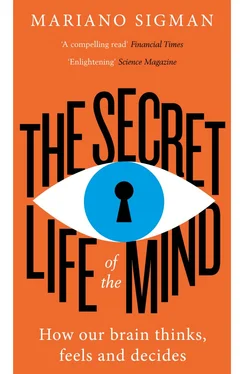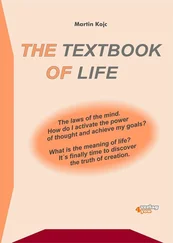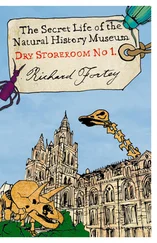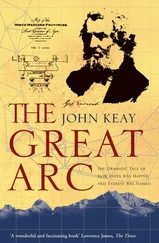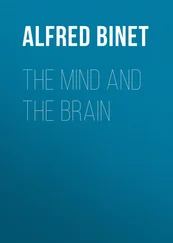The morphology of the word
The two brains of reading
The temperature of the brain
6: Educated brains
How can we use what we have learned about the brain and human thought to improve education?
The sound of the letters
Word-tied
What we have to unlearn
The framework of thought
Parallelawhat?
Gestures and words
Good, bad, yes, no, OK
The teaching instinct
Spikes of culture
Docendo discimus
Epilogue
Appendix
Footnotes
Bibliography
Acknowledgements
About the Author
About the Publisher
I like to think of science as a ship that takes us to unknown places, the remotest parts of the universe, into the inner workings of light and the tiniest molecules of life. This ship has instruments, telescopes and microscopes, which make visible what was once invisible. But science is also the route itself, the binnacle, the chart leading us towards the unknown.
My voyage over the last twenty years, between New York, Paris and Buenos Aires, has been into the innermost parts of the human brain, an organ composed of countless neurons that codify perception, reason, emotions, dreams and language.
The goal of this book is to discover our mind in order to understand ourselves more deeply, even in the tiniest recesses that make up who we are. We will look at how we form ideas during our first days of life, how we give shape to our fundamental decisions, how we dream and how we imagine, why we feel certain emotions, how the brain transforms and how who we are changes along with it.
Throughout these pages we will see the brain from a distance. We will go where thought begins to take shape. And it is there where psychology meets neuroscience. This is the ocean in which many people of varied disciplines have sailed, including biologists, physicists, mathematicians, psychologists, anthropologists, linguists, philosophers, doctors. As well as chefs, magicians, musicians, chess masters, writers, artists. This book is a result of that amalgam.
The first chapter is a journey to the land of childhood. We will see that the brain is already prepared for language long before we begin to speak, that bilingualism helps us to think, and that early on we form notions of what is good and what is fair, and about cooperation and competition, that later affect how we relate to ourselves and others. This early intuitive thinking leaves lasting traces on the way we reason and decide.
In the second chapter we will explore what defines the blurry, fine line between what we are willing to do and what we aren’t. Those decisions that make us who we are. How do reason and feelings work together in social and emotional decisions? What makes us trust others and ourselves? We will discover that small differences in decision-making brain circuits can drastically change our way of deciding, from the simplest decisions to the most profound and sophisticated ones that define us as social beings.
The third and fourth chapters travel into the most mysterious aspect of thought and the human brain – consciousness – through an unprecedented meeting between Freud and the latest neuroscience. What is the unconscious and how does it control us? We will see that we can read and decipher thoughts by decoding patterns of brain activity, even in vegetative patients who have no other way to express themselves. And who is it that awakens when consciousness awakens? We will see the first sketches of how we can now record our dreams and visualize them within some sort of oneiric planetarium, and explore the fauna of different states of consciousness, like lucid dreams and thinking under the effects of marijuana or hallucinogenic drugs.
The last two chapters cover questions of how the brain learns in different circumstances, from everyday life to formal education. For example, is it true that learning a new language is much harder for an adult than for a child? We will take a journey into the history of learning, looking at effort and ability, the drastic transformation that takes place in the brain when we learn to read, and the brain’s predisposition to change. This book outlines how all this knowledge can be used responsibly to improve the largest collective experiment in the history of humanity: school.
The Secret Life of the Mind is a summary of neuroscience from the perspective of my own experience. I look at neuroscience as a way to help us communicate with each other. From this perspective, neuroscience is another tool in humanity’s ancestral search to express – sometimes rudimentarily – the shades, colours and nuances of what we feel and what we think in order to be comprehensible to others and, of course, to ourselves.
CHAPTER ONE
The origin of thought
How do babies think and communicate, and how can we understand them better?
Of all the places we travel throughout our lifetimes, the most extraordinary is certainly the land of childhood: a territory that, looked back on by the adult, becomes a simple, naive, colourful, dreamlike, playful and vulnerable space.
It’s odd. We were all once citizens of that country, yet it is hard to remember and reconstruct it without dusting off photos in which, from a distance, we see ourselves in the third person, as if that child were someone else and not us in a different time.
How did we think and conceive of the world before learning the words to describe it? And, while we are at it, how did we discover those words without a dictionary to define them? How is it possible that before three years of age, in a period of utter immaturity in terms of formal reasoning, we were able to discover the ins and outs of grammar and syntax?
Here we will sketch out that journey, from the day we entered the world to the point where our language and thought resemble what we employ today as adults. The trajectory makes use of diverse vehicles, methods and tools. It intermingles reconstructions of thought from our gazes, gestures and words, along with the minute inspection of the brain that makes us who we are.
We will see that, from the day we are born, we are already able to form abstract, sophisticated representations. Although it sounds far-fetched, babies have notions of mathematics, language, morality, and even scientific and social reasoning. This creates a repertoire of innate intuitions that structure what they will learn – what we all learned – in social, educational and family spaces, over the years of childhood.
We will also discover that cognitive development is not the mere acquisition of new abilities and knowledge. Quite the contrary, it often consists in undoing habits that impede children from demonstrating what they already know. On occasion, and despite it being a counterintuitive idea, the challenge facing children is not acquiring new concepts but rather learning to manage those they already possess.
I have observed that we, as adults, often draw babies poorly because we don’t realize that their body proportions are completely different from ours. Their arms, for example, are barely the size of their heads. Our difficulty in seeing them as they are serves as a morphological metaphor for understanding what is most difficult to sense in the cognitive sphere: babies are not miniature adults.
In general, for simplicity and convenience, we speak of children in the third person, which erroneously assumes a distance, as if we were talking about something that is not us. Since this book’s intention is to travel to the innermost recesses of our brain, this first excursion, to the child we once were, will be in the first person in order to delve into how we thought, felt and represented the world in those days we can no longer recall, simply because that part of our experience has been relegated to oblivion.
Читать дальше
